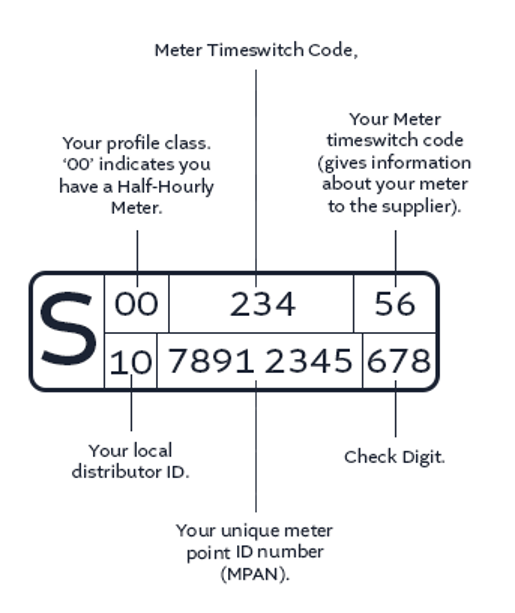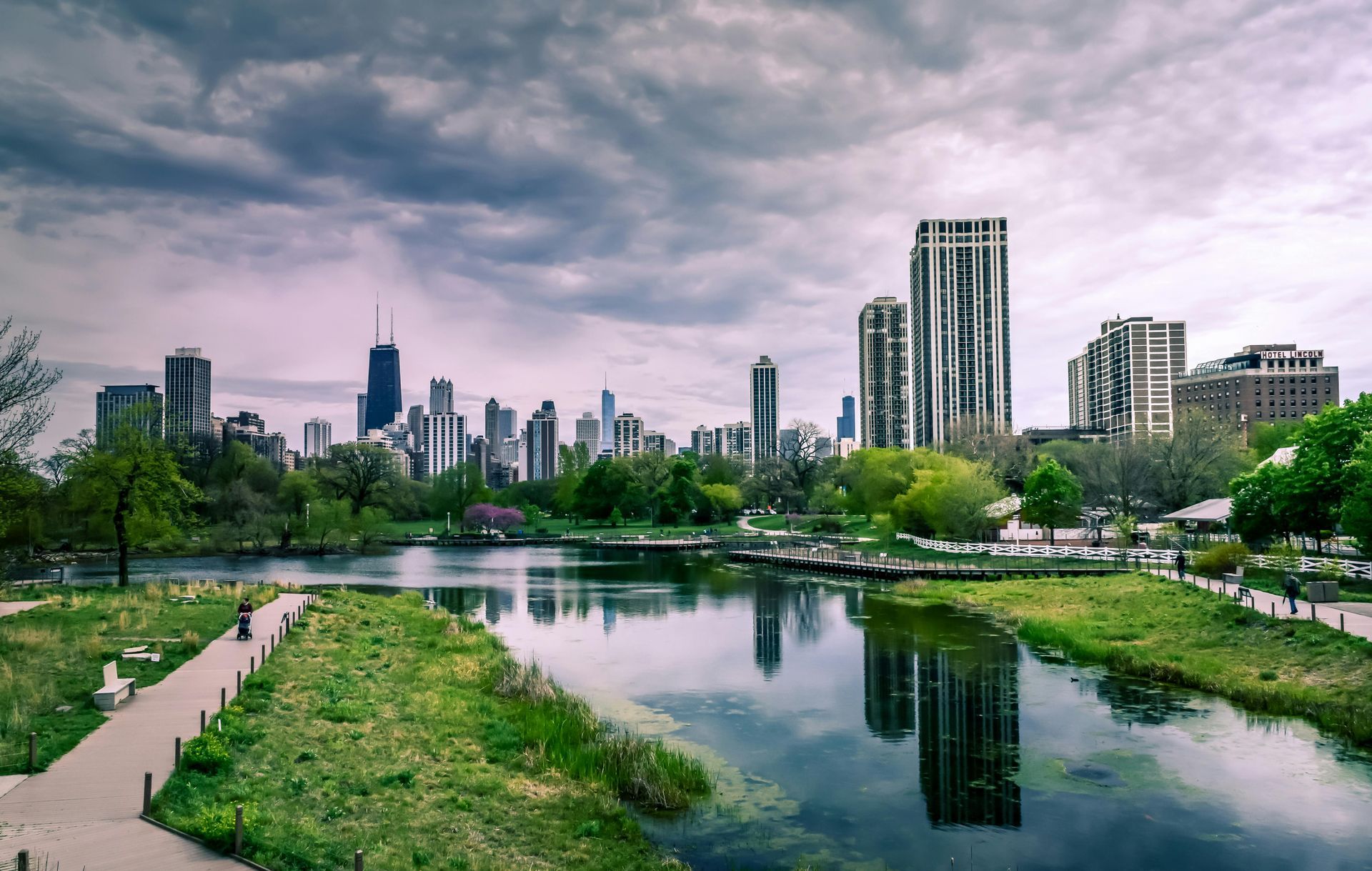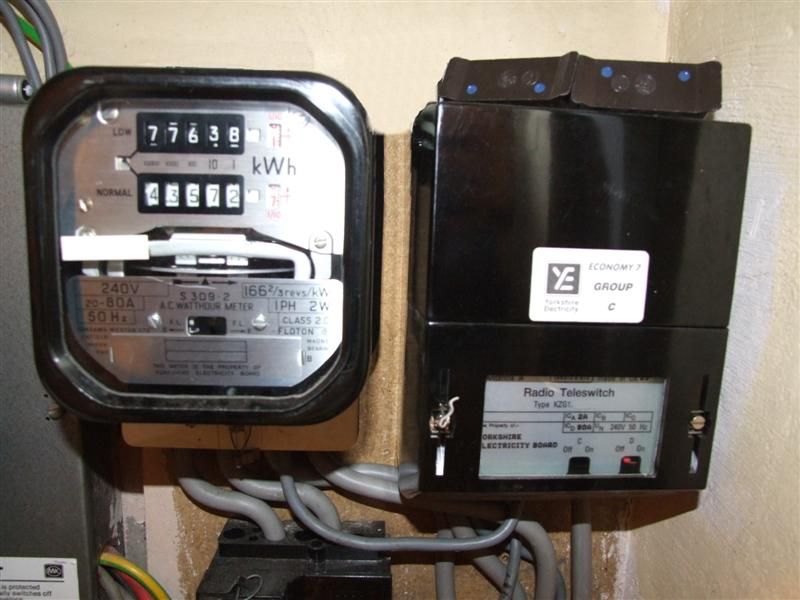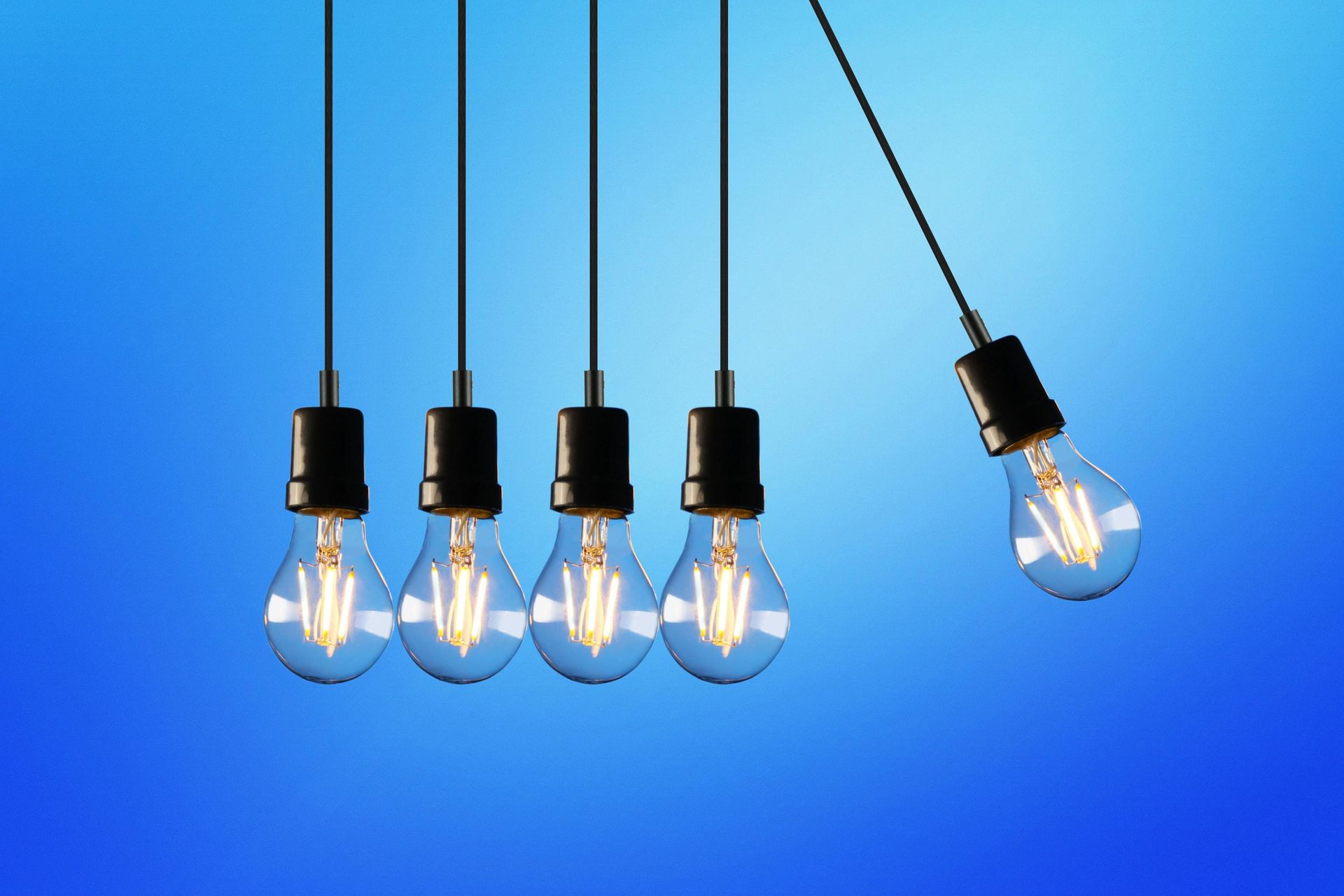Half Hourly Electricity Meters Explained
What is a Half-Hourly meter (HH meter)
A half-hourly meter is a type of electricity meter used by businesses, typically those with high usage. It records the user’s energy consumption at half-hourly intervals 24/7. Usage data is automatically sent straight to the supplier, so you won’t need to take manual readings. A Half-Hourly Meter can handle a larger capacity than a standard meter, which is why it is typically used by businesses that consume more energy, such as factories or warehouses.
What does a Half-Hourly meter look like?
Below is what a half hourly meter looks like. You will also find a meter serial number on the front of the meter (we have crossed this out in red)

If you are unsure on if you have a half hourly meter or not here are three key identifiers:
- Metal ring on the front of meter, this is for cell signal as all half hourly meters or have to be connected via a sim card to submit readings. (specifically, to hold the magnetised communication head when in operation).
- Higher standing Charge, usually with Half Hourly meters, as they have a sim card included and read every half an hour. Your standing charge is typically higher due to this data collection and meter operational costs.
- Meter Serial Number, on your electricity meter, you will have a meter serial number (in red on image above). If you send in your meter serial number we can identify if your meter is Half hourly and provide an estimate on your standing charge cost.
Are Half-Hourly meters more expensive?
Generally, HH meters come at higher costs than usual meters. Half-hourly meters are aimed at businesses that consume large amounts of energy, so the extra cost of having a half-hourly meter works out still being cheaper than not having a HH meter due to the accuracy of the readings.
There are two types of Half Hourly Meters:
- Whole Current (WC) meters
- Current Transformer (CT) meters
You will notice a Capacity Charge on your electricity bills if you have a CT meter. Capacity charge is a fee to reserve and allocate energy on the network for your energy supply.
All Half Hourly Meter customers must also pay Meter Operator (MOP) charges. Your Meter Operator is accountable for installing and sustaining your Half Hourly Meter. A MOP fee is a charge to cover the costs of any services provided by your meter operator. The charges are outlined in a MOP contract, which can be arranged through your supplier or independently.
Standing charges may also be higher if you have a Half-Hourly Meter. However, due to the reporting frequency, half-hourly meters allow for greater billing accuracy, ensuring you only pay for the energy that you use.
You should double-check your kVA usage because if you continuously use less than your kVA allowance, you could downgrade your meter, lowering your charges. Downgrading your meter can be expensive in the short term due to the manual labour involved, but in the long term, you will save money through cheaper energy bills. If you are still trying to figure out whether a downgrade would benefit your company, then contact us, and our team of experts will be more than happy to assist you.
Ways you can reduce your energy costs:
- Reduce your kVA, fall down a banding in the Targeted Charging Review bands
- Staggering breaks, fewer people working machinery all at once = less kVA used
- Performing specific tasks overnight, e.g. charging forklifts and electric vehicles/equipment. If you plan on doing this, we recommend a two-rate meter (day/night) to make the most out of your cheaper night rates
Do I need a Half Hourly (HH) meter?
Legally, due to the P272 legislation introduced in 2015, you must have a Half Hourly meter installed if your business reaches 100kVA more than three times a year.
Customers with a ‘00’ profile (which can be found on the top line of your MPAN) indicates that they have a Half Hourly meter.
The P272 legislation was introduced to ensure the country’s energy needs are met. Companies that use a higher amount of energy were targeted first, as any changes or fluctuations in their energy usage will most affect demand.

Additionally, the introduction of MHHS (Market-wide half hourly settlement) means that there will be no escaping the half hourly meter roll outs being enforced by OFGEM.
Why Are Half Hourly (HH) Meters Better for the Grid?
Efficiency: The grid becomes more efficient, as real-time data enables operators to balance supply and demand more effectively.
Cost Reduction: The overall cost of energy falls as inefficiencies are reduced, allowing for optimized energy operations.
Peak Demand Reduction: Energy usage is reduced during peak times, making the grid more stable through a demand-response strategy.
Greener Future: HH meters support our net zero goal by helping grid operators predict and manage energy demand more accurately. Grid operators can track peak demand times, encourage consumers to adjust usage habits, and introduce them to renewable energy sources.
What is Market-wide half-hourly settlement (MHHS)?
MHHS (Market-wide half-hourly settlement) is a government scheme that requires all UK energy suppliers to ensure all consumers have their meter readings monitored on a half-hourly basis by the end of 2026. Elexon oversees this change, which OFGEM financially sponsors.
Market-wide half-hourly settlement will remove the current meter types (Half Hourly / Non Half Hourly) and replace them with three new meter categories, which will be:
- Smart metering
- Advanced Metering
- Unmetered supplies
Most consumers have a non half hourly (NHH) meter, which means because there are not as frequent meter readings, meter readings are not entirely accurate and as a result there will be an imbalance between supply and demand.
If a current meter is not HH, AMR, SMETS 1, or smart, it must be changed by March 2026. The timeline for these changes is:
2023/2025 - System integration testing.
April 2024 – All new connections should now be HH. No NHH metering will be allowed.
December 2024 – Suppliers expected to reduce mass agent appointments.
April 2024 / 2025 – This is the final time frame before migration begins. This may put time constraints on companies.
March 2026 –
All sites are now either migrated, had their meters replaced, or converted.
How Will Market Wide Half Hourly Settlement (MHHS) Affect Your Energy Bill?
The supplier and the grid both benefit by shifting the load to off-peak times. A flatter demand curve means power facilities can operate closer to maximum capacity instead of relying on expensive backup power during peak demand. As the grid becomes more efficient, the cost of energy decreases.
Peak Demand Reduction: Consumers can use less energy during peak times, and more when renewable energy is available, decreasing fossil fuel use and reducing price volatility.
Cheaper Procurement Costs: With the help of predictive analytics from HH and smart meters, energy companies better understand consumer usage patterns and trends.
Using this data, suppliers can develop smarter procurement systems. Energy can be purchased in real-time when prices are expected to be lower, driving down costs through competition and reducing overall energy prices.
If you are not legally required to upgrade to an Half Hourly meter, upgrading may not be advisable, as it could increase your energy bills. However, if you have moved into a new premises with an inherited Half hourly meter, we can look to change from a CT to WC which may reduce the standing charge considerably
We will gladly assist you if you have moved into a new premises and inherited a HH meter and would like help lowering your energy costs. Contact us on 0161 521 3400 or email us at Info@purelyenergy.co.uk for any queries, and we will advise you on your next steps to ensure you can attain the lowest energy bills possible.
This Article was written by Megan Glover of Purely Energy. If there are any suggestions or questions - Please get in touch with us.




